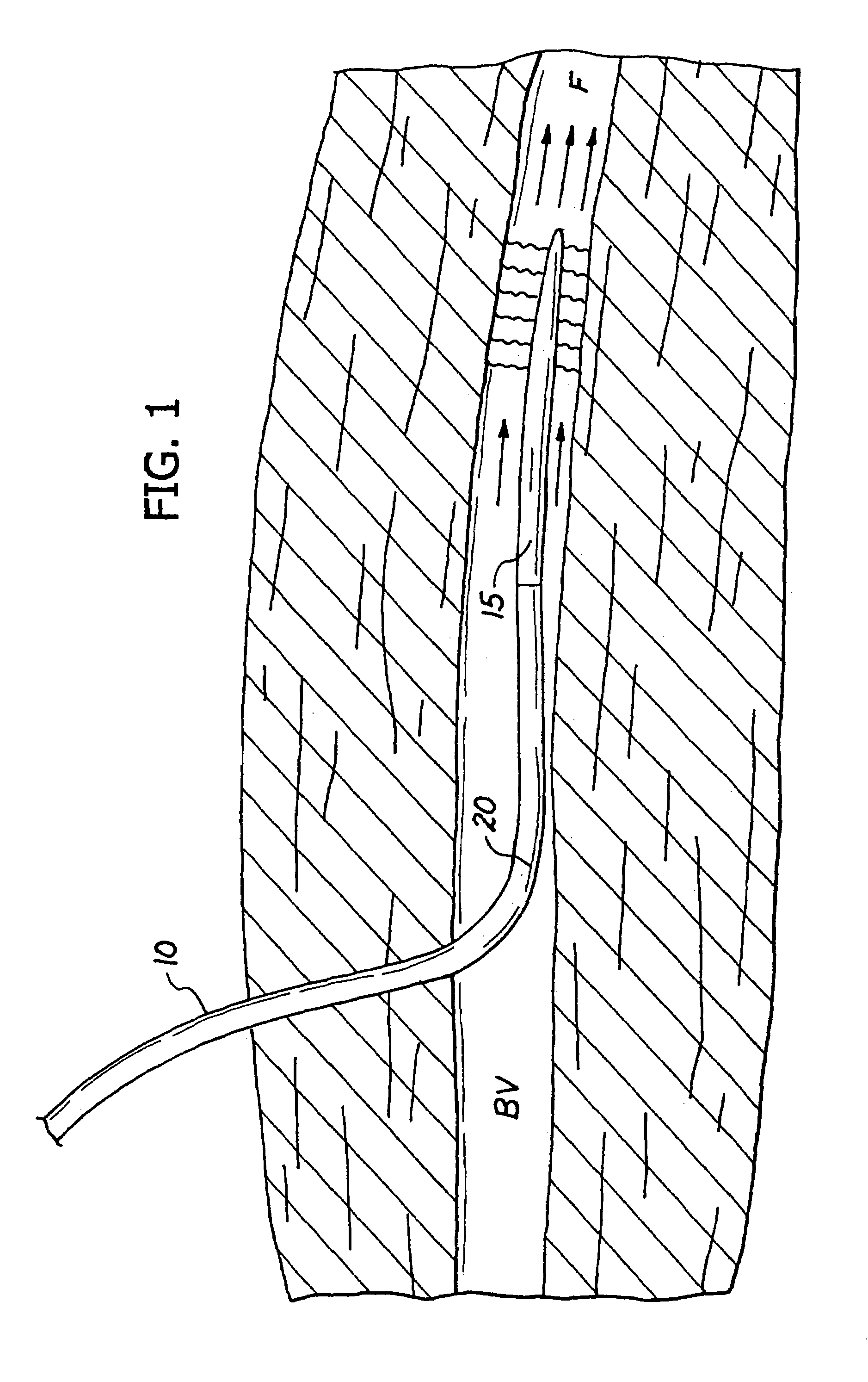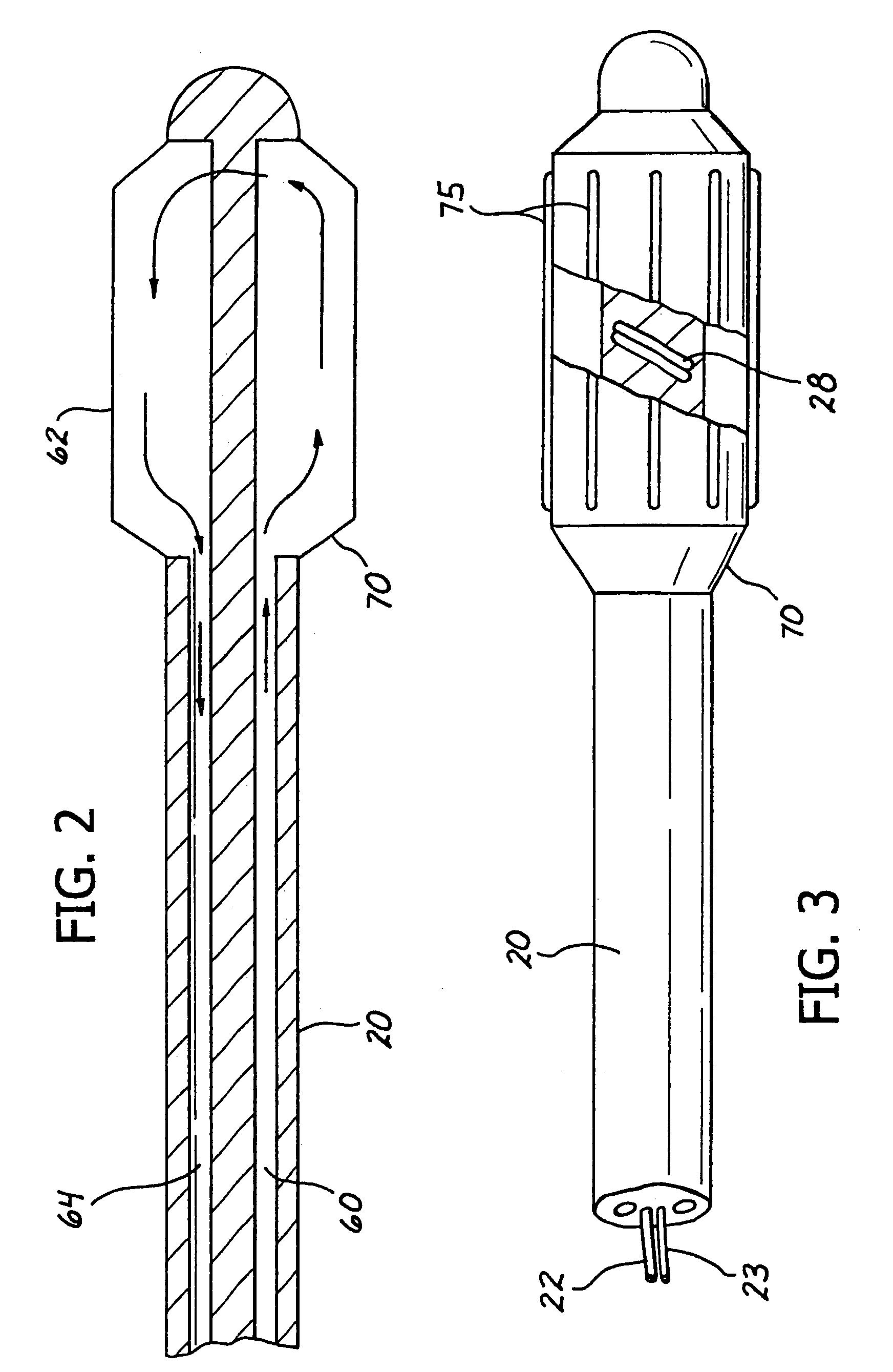Methods and apparatus for regional and whole body temperature modification
a technology of body temperature and apparatus, applied in the field of selective modification and control of patients body temperature, can solve problems such as brain damage or other nerve damage, neural tissue damage, and fatality of hyperthermia
- Summary
- Abstract
- Description
- Claims
- Application Information
AI Technical Summary
Benefits of technology
Problems solved by technology
Method used
Image
Examples
Embodiment Construction
[0083]The present invention provides methods and apparatus for selectively controlling regional and whole body temperature by warming or cooling a body fluid such as blood in situ and directing the warmed or cooled body fluid to a desired location. According to the present invention, a catheter having a heat exchanger which may be, for example, a balloon with fins, is inserted into a fluid containing portion of the patients body, for example, a blood vessel. A blood channeling sleeve is mounted over the heat exchanger and is open at both its proximal end (closest to the insertion point) and its distal end (farthest along the catheter from the insertion point). The distal end of the sleeve is placed so that fluid such as blood that enters the proximal end of the sleeve flows in heat transfer proximity past the heat exchanger. Heat exchange proximity requires sufficient proximity for effective heat exchange to occur and depends on such factors as the chemical and physical make-up of t...
PUM
 Login to View More
Login to View More Abstract
Description
Claims
Application Information
 Login to View More
Login to View More - R&D
- Intellectual Property
- Life Sciences
- Materials
- Tech Scout
- Unparalleled Data Quality
- Higher Quality Content
- 60% Fewer Hallucinations
Browse by: Latest US Patents, China's latest patents, Technical Efficacy Thesaurus, Application Domain, Technology Topic, Popular Technical Reports.
© 2025 PatSnap. All rights reserved.Legal|Privacy policy|Modern Slavery Act Transparency Statement|Sitemap|About US| Contact US: help@patsnap.com



